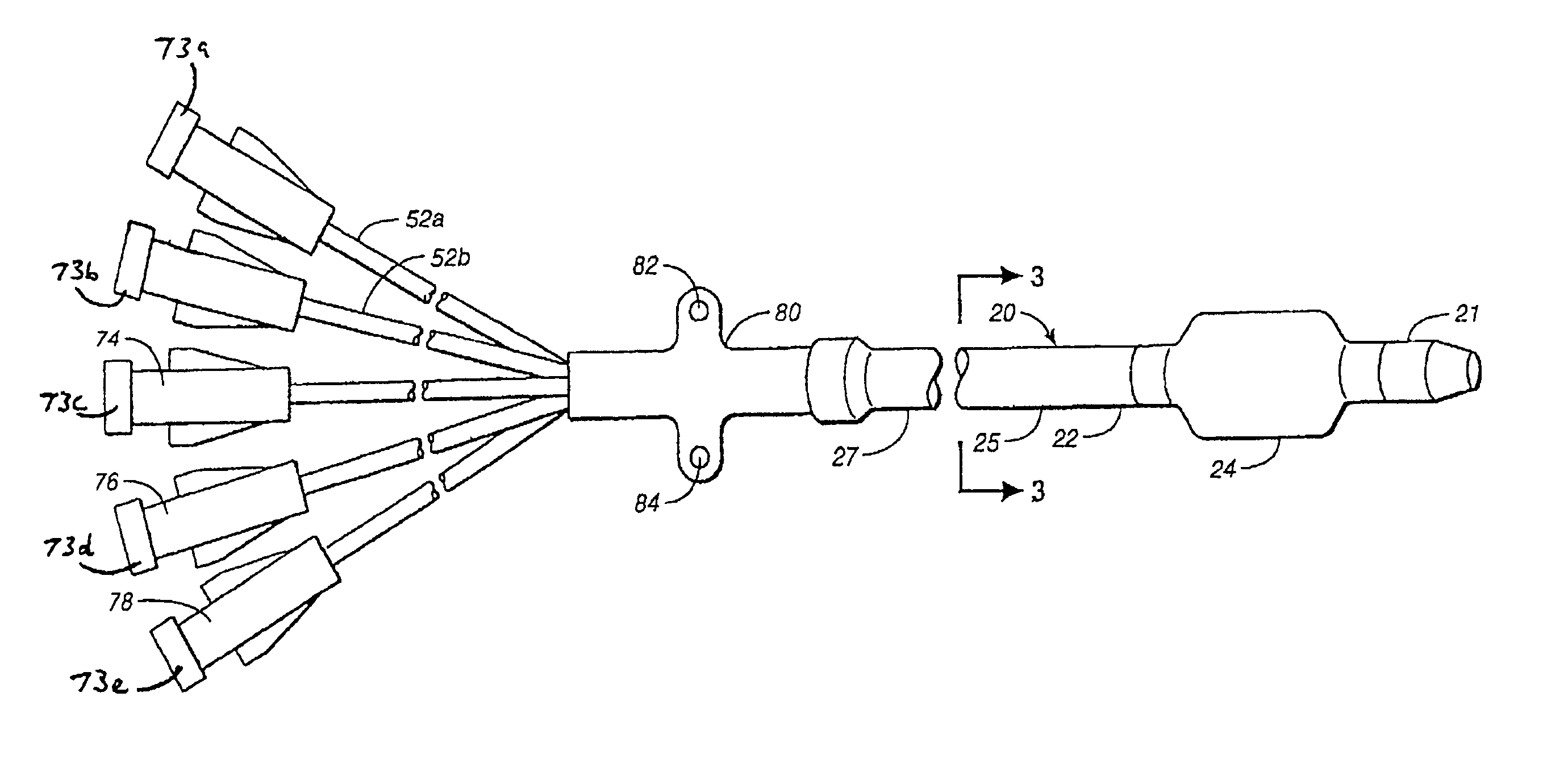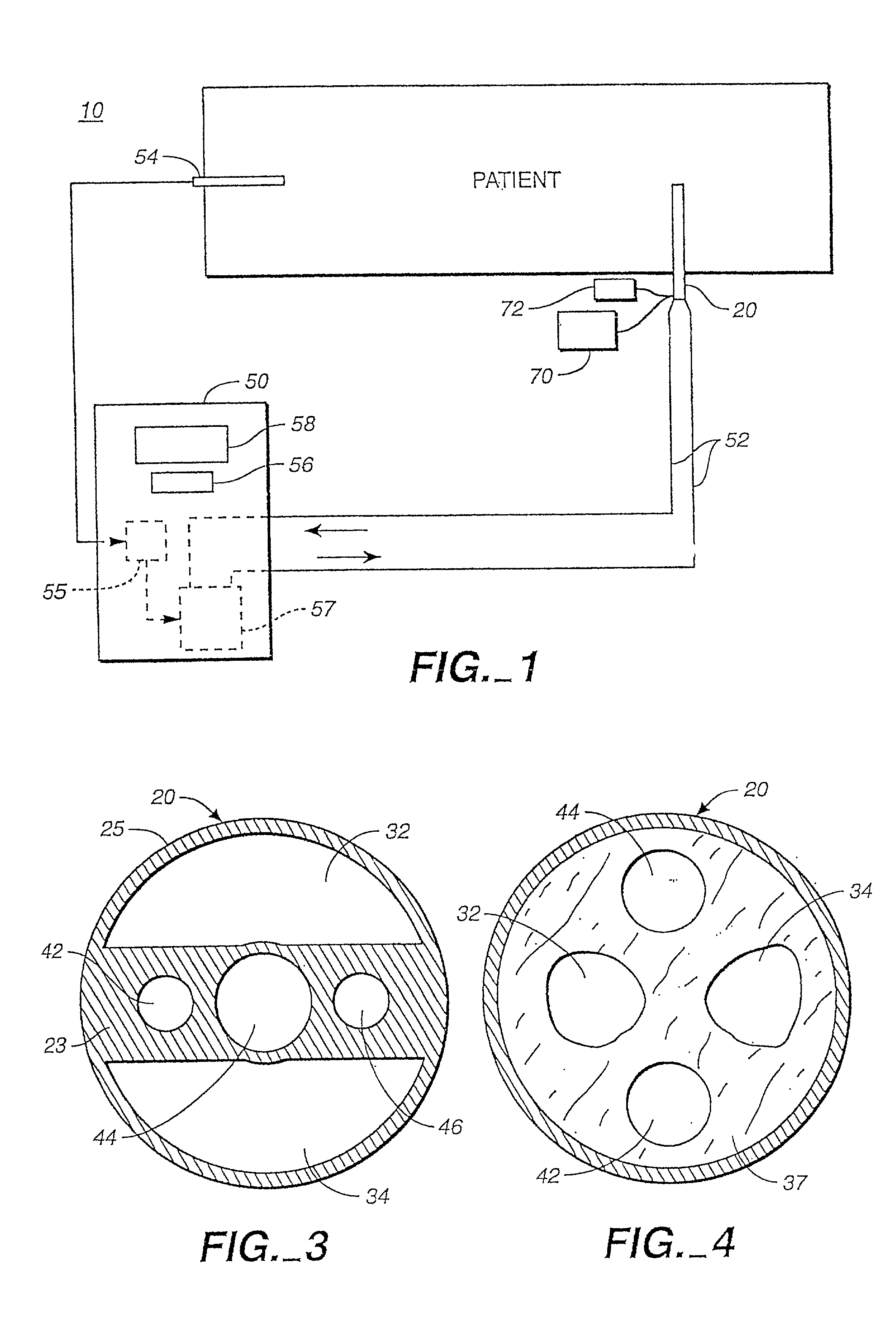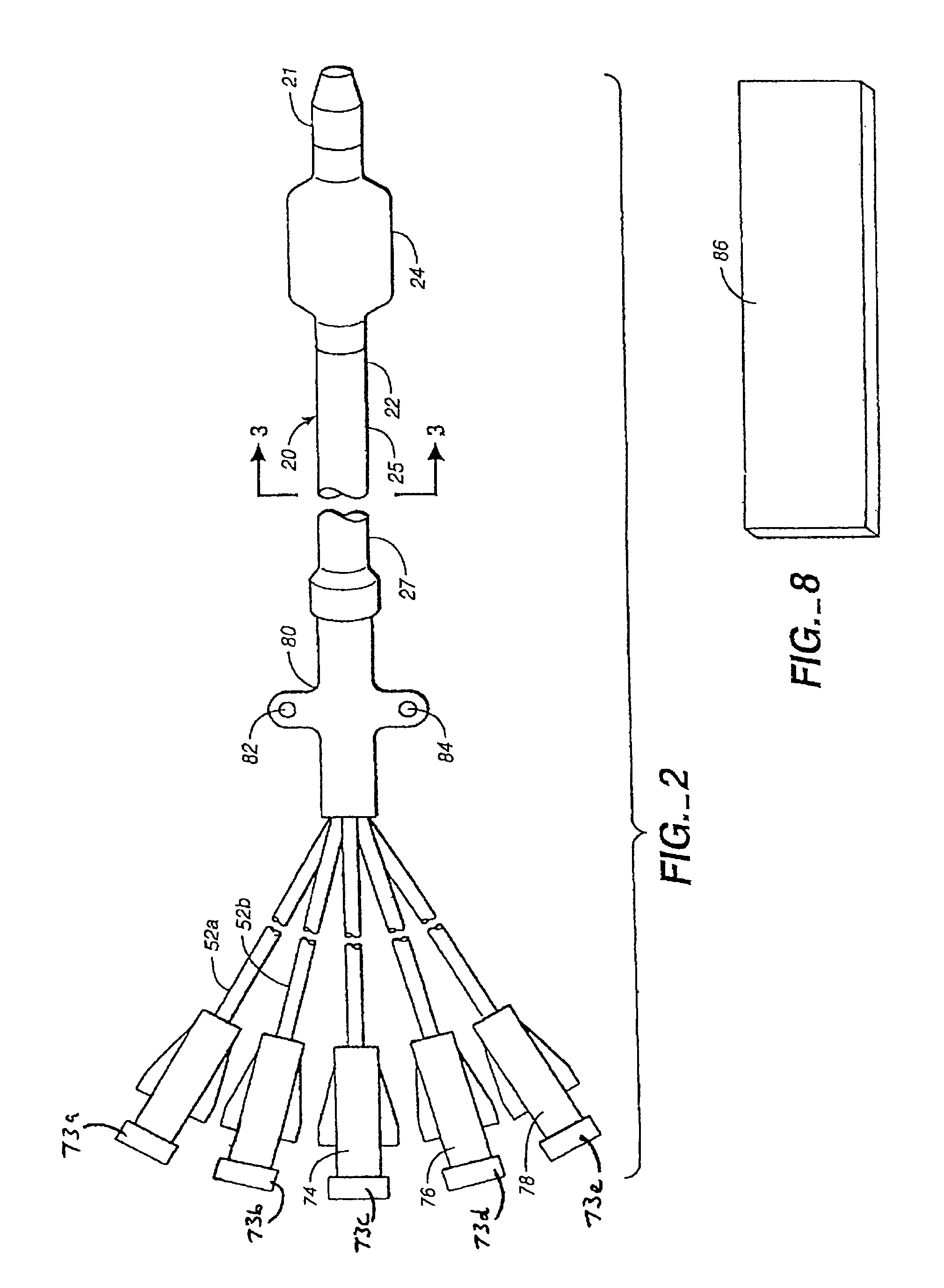Method for a central venous line catheter having a temperature control system
a technology of temperature control system and catheter, which is applied in the field of catheters, can solve the problems of exacerbate detrimental effects in the brain, prior methods do not provide precise control of patient cooling, and approaches to cooling a patient require excessive time to cool the patient, so as to achieve the effect of increasing the workload of the system
- Summary
- Abstract
- Description
- Claims
- Application Information
AI Technical Summary
Benefits of technology
Problems solved by technology
Method used
Image
Examples
Embodiment Construction
[0025]FIG. 1 shows a temperature control system 10 in accordance with the invention. A central venous line catheter 20 providing access to the central blood supply of the patient is disposed in heat exchange relationship with the patient. Central venous line catheter 20 is provided with a circulating heat exchange fluid (not shown) whose temperature is automatically controlled in accordance with a feedback scheme in order to achieve a desired patient target temperature or temperature range. The feedback schemes involves sensing patient temperature using a probe 54 whose output is provided to a temperature controller 55 housed in a temperature control module 50. The temperature controller 55 determines whether the sensed temperature represents a deviation from the desired temperature or range and selectively activates a heat control unit 57 in order to heat or cool the heat exchange fluid depending on the direction of deviation. As described in more detail below, the central venous l...
PUM
 Login to View More
Login to View More Abstract
Description
Claims
Application Information
 Login to View More
Login to View More - R&D
- Intellectual Property
- Life Sciences
- Materials
- Tech Scout
- Unparalleled Data Quality
- Higher Quality Content
- 60% Fewer Hallucinations
Browse by: Latest US Patents, China's latest patents, Technical Efficacy Thesaurus, Application Domain, Technology Topic, Popular Technical Reports.
© 2025 PatSnap. All rights reserved.Legal|Privacy policy|Modern Slavery Act Transparency Statement|Sitemap|About US| Contact US: help@patsnap.com



